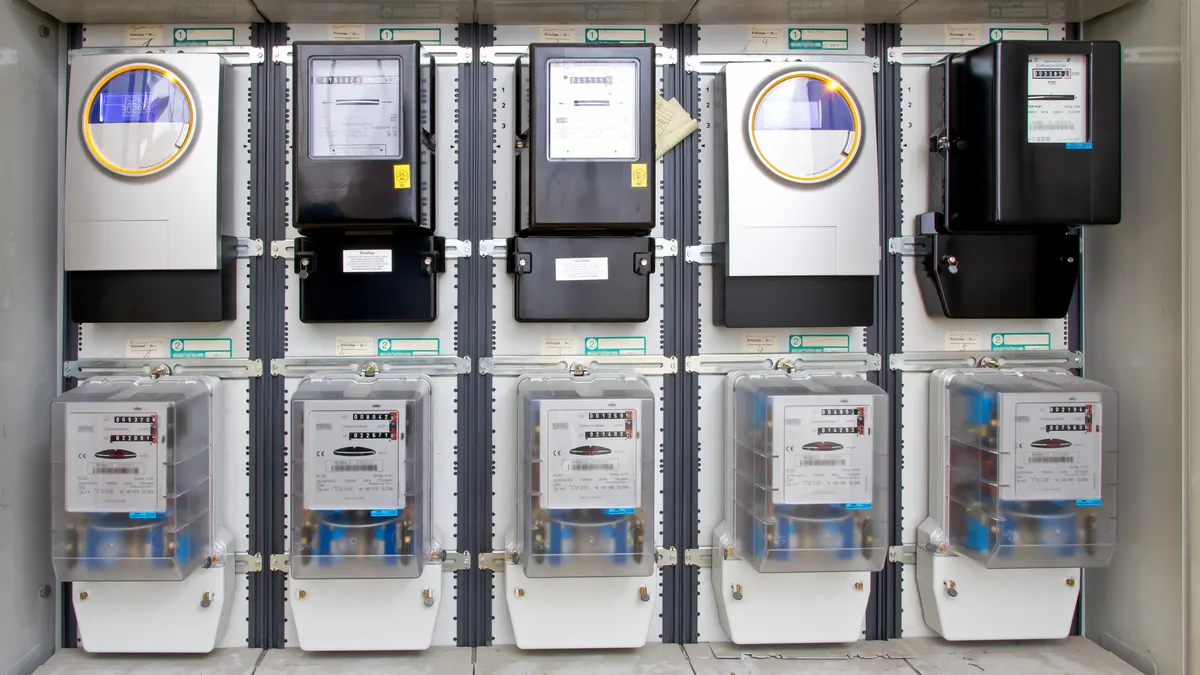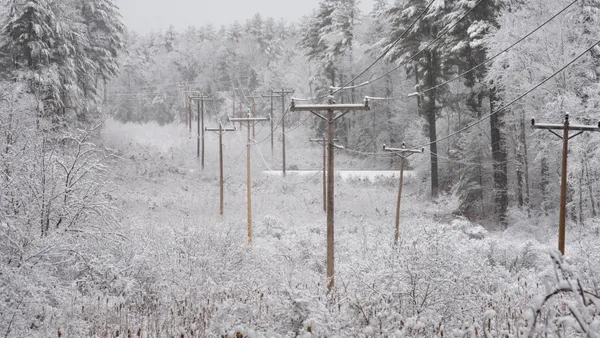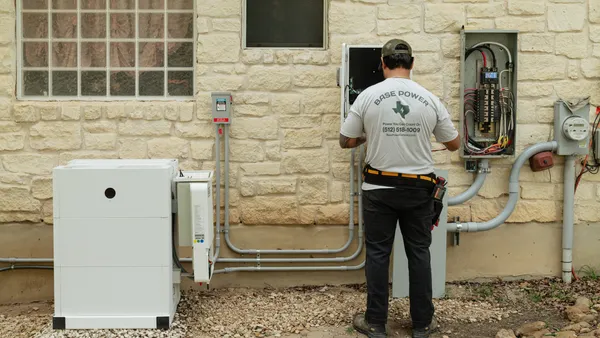Dive Brief:
- Xcel Energy recently worked with the Electric Power Research Institute (EPRI) to assess the use of demand side management (DSM) and energy storage compared to a conventional upgrade for a feeder on its distribution system, Xcel and EPRI officials said at DTECH on Tuesday.
- The analysis found DSM resources more cost effective than energy storage. "So it makes sense to first utilize the DSM resources as much as you can," Jouni Peppanen, a technical leader in EPRI's power system studies group, told conference attendees. But the net benefits from scenarios that included storage were higher than those with DSM only, he noted.
- Xcel now wants to have its own modeling tools to conduct such an analysis and help understand the details of its DSM program and how to apply it.
Dive Insight:
Xcel is entering into distribution planning regulatory proceedings in Colorado and Minnesota and teamed up with EPRI to conduct a non-wires alternative analysis to verify some of the assumptions it was making regarding the potential need for upgrades.
"These proceedings really are more about transparency on our distribution planning process and one of the things that our stakeholders are interested in is non wires alternative," said Beth Chacon, director of grid storage and emerging technology at Xcel Energy. The company is assessing the use of distributed energy resources (DER) to serve as alternatives to traditional upgrades.
The project in question was a small part of Xcel's distribution system eligible for an upgrade in terms of increased capacity and distribution. "And we took an approach, primarily with our demand side management or energy efficiency and demand response programs, to look at non wires," Chacon said.
Xcel also looked at the option of adding energy storage, which can also help reduce distribution constraints, while examining other energy storage capabilities like energy arbitrage and reserve capacity, she noted.
The wires alternative Xcel and EPRI examined was to add a new substation transformer base at a cost of about $10 million. There's no more capability to add another feeder to this existing transformer, she noted.
"Our goal was to really look first at DSM but also compare that against the cost of energy storage," she said, adding that Xcel didn't have a lot of PV participation in the particular area of its distribution system being studied, so it didn't look much at that.
The modeling confirmed the company's initial assumptions that energy efficiency and demand response "are a good way to do this particular non-wires alternative, and also there's a possibility for storage," Chacon said.
But "early on in the analysis, it was clear that the demand side management resources are more cost effective than energy storage. So it makes sense to first utilize the DSM resources as much as you can ... and then, as needed, complement the DSM with energy storage," Peppanen noted.
Xcel and EPRI looked at five scenarios — a conventional, wires-based upgrade and four alternative scenarios with different combinations of DSM along with utility owned and operated storage that's close to the substation.
For the analysis, DSM resources were put into two categories: fixed resources, such as air conditioner retrofits and home insulation, which result in a constant load reduction throughout the year, whenever they are needed; and flexible DSM resources, such as smart thermostats, that result in load reductions subject to certain limitations. The analysis assumed some expansion of these resources from 2018 to 2025, but no expansion after 2025.
In addition to understanding the potential power capacity from the DSM resources, there was also a need to understand the limitations to their use, which are not always hard limits, Peppanen said. For example, if a customer is involved too frequently in a DSM program, they might opt out of it. The analysis assumed certain limits on the use of the resources.
The question then became how far into the future could Xcel defer the distribution upgrade if it used the existing and expanded DSM resources and how much storage would it need.
The storage was sized based on the load peaks not being addressed with the demand side management, as well as how Xcel would dispatch the DSM resources along with the storage — about 1.7 MW, 2.4 hours when paired with existing DSM resources, somewhat smaller with expanded DSM resources, according to Peppanen.
Looking at the results of the analysis, the existing DSM allowed Xcel to defer the distribution upgrade until 2025. "If we expand the DSM resources, we get through 2026," Peppanen said.
With no DSM or storage, Xcel would need the distribution upgrade in 2021. With the storage, Xcel could defer the upgrade through 2027, though that was simply the end of the time horizon for the analysis.
Peppanen said that while all four alternatives to the conventional upgrade break even, "expanding the DSM resources also makes sense because it essentially results in higher net benefits compared to using just the existing resources."
In addition, the cost of the storage assets was smaller than the value of the deferral, so that "the net benefit from the scenarios with storage [were] higher than the net benefits from the scenarios with DSM only," he said.
But what do these results potentially mean for Xcel in practical terms, beyond the specifics of whether to upgrade a particular feeder?
"It was nice that we had the modeling tool to really understand ... all the details of our DSM program," Chacon said.
"Should we do extra marketing in this area? Should we really work with builders who are building new homes in the area to target higher efficiency in those models?" she said, adding that it was very helpful to learn how energy storage plays a role and can also be brought in later, if needed.
She also noted that Xcel recently did some screening on other feeders and in most cases, "you really need a situation where you're looking to defer an upgrade of a transformer because otherwise it's usually more economical to make the wires upgrade.
The analysis is complex and can't be done on every feeder, but Xcel has a screening process to help with that. And now, Xcel wants to have its own modeling capabilities and is "waiting on some great tools to evolve," Chacon said.














